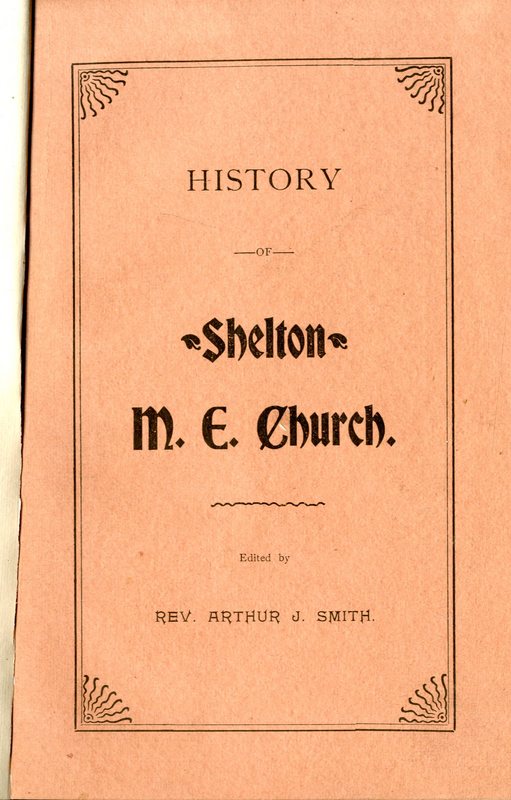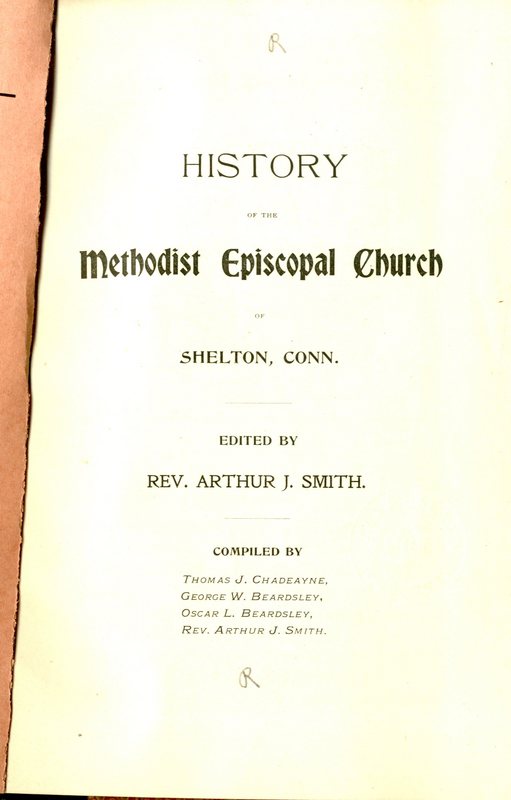The Shelton Methodist Episcopal Church was established in 1782.
Thirty people signed the Charter, total membership consisted of 6 probationers and 32 members. John E. Wildey was appointed pastor in charge.
The church was an outgrowth of the Scattergood mission - an undenominational organization holding its meetings on the property where the post office now stands. The Baptist members withdrew first and formed the nucleus of the present Baptist church organization. A deed of the mission property was then given by the remaining members of the Scattergood mission to the Methodist Episcopal Church.
http://www.umcshelton.org/
This volume, published in 1882, includes many advertisements by local merchants.
Shelton was settled by the English as part of the town of Stratford, Connecticut, in 1639. On May 15, 1656, the Court of the Colony of Connecticut in Hartford affirmed that the town of Stratford included all of the territory 12 miles inland from Long Island Sound, between the Housatonic River and the Fairfield town line. In 1662, Stratford selectmen Lt. Joseph Judson, Captain Joseph Hawley and John Minor had secured all the written deeds of transfer from the Golden Hill Paugussett Indian Nation for this vast territory that comprises the present-day towns of Trumbull, Shelton and Monroe. Shelton was split off from Stratford in 1789, as Huntington (named for Samuel Huntington). The current name originated in a manufacturing village started in the 1860s named for the Shelton Company founded by Edward N. Shelton — also founder of Ousatonic Water Power Company. The rapidly growing borough of Shelton incorporated as a city in 1915 and was consolidated with the town of Huntington in 1919 establishing the present city of Shelton.
http://www.sheltonhistoricalsociety.org/pootatuck-corum-ripton-huntington-and-shelton.html

